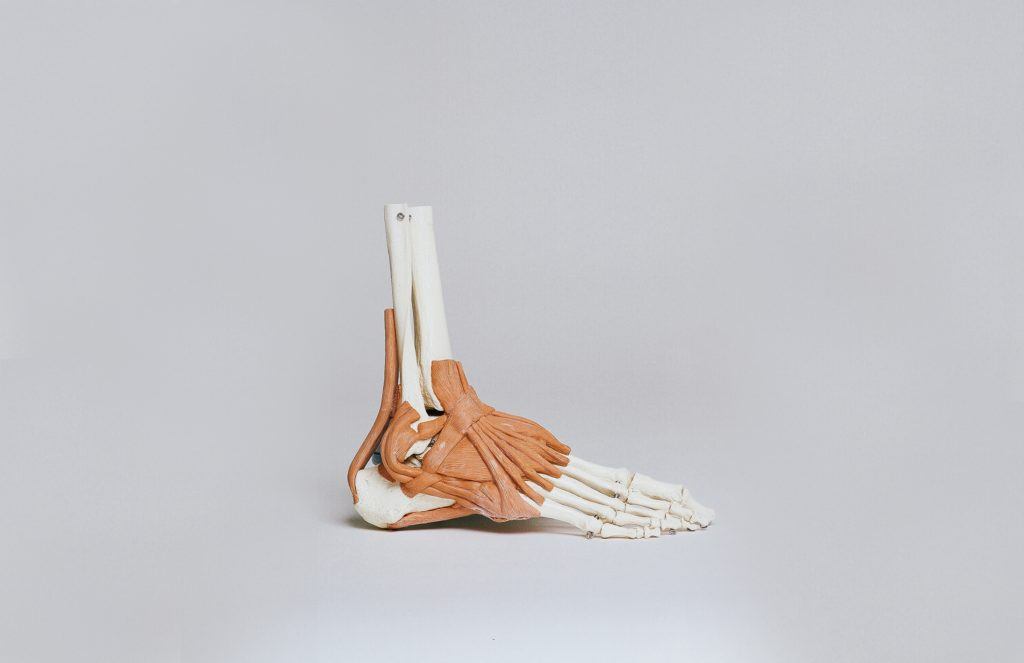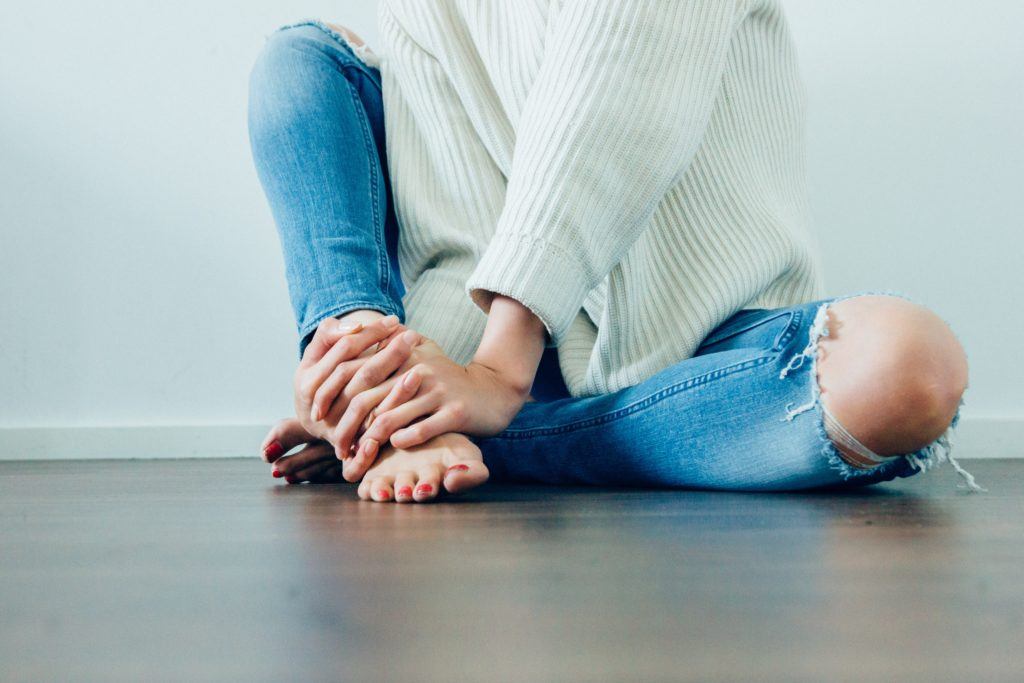Cramps can cause as much worry to the person experiencing them as pain, especially if you don’t know what’s causing them. If your foot or leg is cramping, though, don’t panic!
There are a number of physical situations that can result in cramping, none of which are unusual or cause for worry. When you develop an understanding of what causes foot cramps, your additional knowledge can make dealing with the pain all the easier.

Consider some of the causes of and solutions to foot cramping below in order to come to grips with what’s happening in your body, and what you can do in order to combat the cramping of your muscles.
Contents
Foot Cramps: A Better Understanding
Understanding what causes leg and foot cramps does, to a point, require that you understand just what’s happening to you when you start experiencing a cramp.
Charley horses and other sorts of leg and foot cramps can be extraordinarily painful, to the point where you may think that you’ve been grievously injured when you experience them.
While cramps can occasionally be the result of an injury, more often they occur when a muscle, ligament, or tendon is overstressed.
Cramping in your foot is always involuntary. It occurs when the muscles in your foot or leg contract unexpectedly, causing you great pain and sending spasms up into the arch of your foot and other localized muscles.
It can take anywhere between two and ten minutes for these contractions to calm, though the pain can make those minutes feel like an eternity.
If you experience a foot cramp that lasts for more than ten minutes, seek out immediate medical attention. If your cramp comes and goes, though, it may have been caused by one of the stimuli listed below.
What Causes Foot Cramps?
Foot cramps can arise for a number of reasons, though their primary and overarching cause is stress to a muscle, ligament, or tendon in the foot.
Consider the following when debating why your leg, ankle, or foot has involuntarily contracted.
Dehydration
You are more prone to cramping when you aren’t giving your body enough water to work with. Your body is over 70% water; when you get dehydrated, all of your cells have to ration the amount of water they have to work with, thereby limiting the functionality of your entire body.
Your electrolyte levels, too, fall from their most effective levels, leaving your muscles and overall chemical balance at risk. As such, when you don’t drink enough water, it becomes more likely that you’ll develop a cramp.
Keep hydrated over the course of a day and especially when you plan to work out in order to avoid this cause of cramping; it won’t remove the risk of cramping from your day entirely, but it will go a long way to ensuring that your work remains pain-free.
Overuse
If you’re primarily experiencing foot cramps at night, then your cramps may be the result of over-walking or overexertion.

You might not feel your muscles begin to contract during a day full of work. Constant movement means you have plenty of stimuli to distract you and that your muscles don’t have an opportunity to rest – that is, to contract.
Once you settle in for a good night’s sleep after a long day, your muscles may take advantage of your stillness and pull in on themselves in an attempt to recover from all the work you put them through. As such, your night of sleep is likely to be interrupted by abrupt and unwanted leg and foot cramps.
If you frequently fall victim to foot cramps at night, try monitoring your level of exercise over the course of a particular day. If you find that you’re on your feet for more than eight hours, you can anticipate your cramps and do what you can to keep them from becoming severe the moment you decide to go to sleep.
Nerve Compression
It’s possible that you might develop a cramp when your nerves are compressed – that is to say, when you’ve been inactive for long periods of time or have been sat at an odd angle.
You’re likely to develop a crick in your neck, for example, when you sleep in an odd position. Much the same can occur in your legs and feet.
If you find that, over the course of a day, you’ve been sitting differently from how you normally do, or your feet have gone numb at more frequent intervals, try to take account of your posture and change it accordingly.
Cramps that arise due to nerve compression take a little more time to recover from than cramps of other sorts, but they do go away in a reasonable amount of time – even if that span of time you spend waiting for your muscles to calm feels like years instead of minutes.
Pregnancy
Pregnancy comes with a lot of different types of discomfort. The whole of your body changes when you become pregnant, but even so, you might not initially attribute the cramping of your feet to the hormonal and physical changes your body is undergoing.
Swollen feet are supposed to be bad enough – it might be a surprise that pregnancy comes with the perks of cramps, but then again, it may not.
Because your body overall is becoming more sensitive, the causes of foot cramps already discussed may take even less time or exposure to cause your feet to cramp.
Additionally, the weight you put on while pregnant will stress the bones and muscles of your feet, resulting in additional friction between the joints of your foot and, in turn, tight or overly-contracted muscles.
How to Treat Foot Cramps
Most of the time, when you’re experiencing a cramp, you’re not looking to understand what may have caused it – you’re looking for the best way to make the pain stop.
Any of the below methods are viable ways to lessen the amount of pain you’re in while experiencing a foot or leg cramp. Which one you use will likely depend on your level of pain.
More serious treatment for persistent cramps should be discussed with a medical professional, though any of the below methods can be used in addition to doctoral recommendations – so long as they don’t interfere with the prescribed solution.
Standing Up
It may feel impossible to get onto your feet when you’re experiencing a foot cramp, but moving around can provide you with some relief.
Don’t try and bear too much weight on your foot. Do what you can, though, to make your way around the room you’re in, or even to just rise from the seat you’ve taken.
You will likely feel the urge to take the fetal position and massage the pain out of your foot. This isn’t a terrible response to your cramping, but pairing occasional bouts of pressure with a lap or two around your room will help you recover from your cramp much more quickly.

Stretching
If you can’t make it to your feet, then you can take advantage of your sitting position in order to stretch and relieve some of the pain in your foot.
Stretching out your hamstrings will undoubtedly not only redirect your attention away from the pain in your feet, but it will also force your muscles to contract in a different manner than that which they have inadvertently done.
Even pointing your toes towards the nearest wall will help redirect the muscles in your feet and help you combat the involuntary spasms of a cramp.
Massages
As previously mentioned, your first instinct when experiencing a cramp may be to massage it out of your system. This impulse does hold water when you’re trying to think of different ways to rid yourself of your cramp.
The pressure offered by a massage can help you relax your muscles, thereby preventing them from re-contracting mid-spasm. Take your time and try to keep your movements during a massage consistent.
Don’t apply too much pressure to your cramp, either! You don’t want to cause yourself any additional pain while dealing with a cramp.
Move your fingers against the painful area in steady strokes, following the grain of your muscles, until some of the pressure in your foot or affected area begins to abate.
Heat
Warmth, too, will serve to relax your muscles out of their cramped state. In the midst of a massage, the heat coming off of your palms may aid you in trying to rid yourself of your cramp.
However, if a cramp persists, a warm bath may do you wonders. Make sure that you don’t expose the affected area to too much heat – though the urge is understandable, you don’t want to be dealing with burns along with your muscle contractions.
If you don’t feel as though you can make it into your bathroom or soak your feet in a bucket of warm water, heating pads make effective substitutes and are exceptionally versatile when it comes to helping rid your body of pain.
Whatever method of warming yourself you decide to try, don’t linger in the warmth for too long. Home solutions to foot cramps should all be applied in moderation.
Pain Medication
Anti-inflammatory medication will also serve you well, should your cramp be exceptionally severe.
Don’t take more than a recommended dose of your anti-inflammatory medication of choice, but don’t feel as though you absolutely can’t reach for your bottle of Advil in order to deal with surprising and intense pain.
Anti-inflammatory medication will not only block pain receptors in your brain, but it will calm the muscles that are cramping in your foot and leg, limiting the number of times the muscle can re-contract or spasm.
Here’s a video showing more details on foot cramps.
Do you have any tips for dealing with foot cramps?

